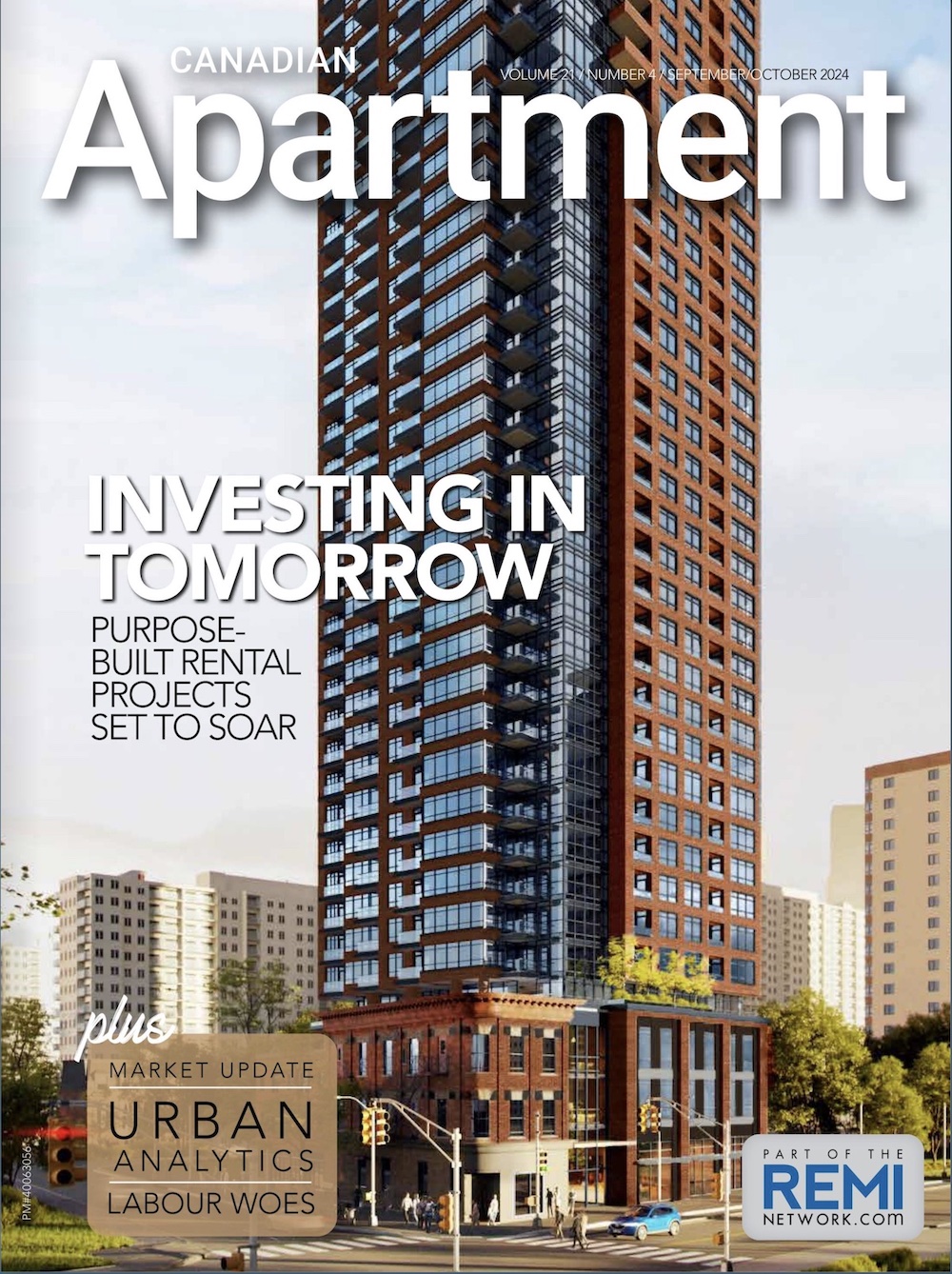High-rise apartment buildings are permanent fixtures in Toronto’s rapidly changing landscape. But, from the inner-suburbs to the outer perimeter of the city’s ever-expanding sprawl, these mostly brown concrete blocks, born out of post-war expansion, are hardly seen as architectural jewels.
In the 1950s through 70s, advertisements lured starry-eyed tenants with images of chic couples and young professionals enjoying the types of extravagant amenities once reserved for the rich and famous. Known as “Towers on the Park,” they promised a better life—a quiet suburban existence in elegant rental suites overlooking resort-like grounds, just a five-minute drive to anywhere.
Skip ahead thirty or forty years and the reality is much starker. In the shadows of Toronto’s shiny new condominium towers, the old apartments look lacklustre at best. Words like “luxury” have long since dropped from the vacancy ads. Restrictive zoning prohibits commercial developments on the properties, effectively isolating tenants from the shops, restaurants and essential services that define most energetic neighbourhoods.
“One of the big issues with these towers is that they were never intended for the demographics we are seeing in them today,” says Graeme Stewart, a registered architect and associate with ERA Architects, and a key initiator of the Tower Renewal Project. “They have become landing pads for newcomers to Toronto. On the one hand, this has helped immigrants by creating a ready-stock of affordable housing. On the other hand, it’s created barriers. Convenience wasn’t part of the original plan, and nor were large families. The buildings were intended for young couples and professionals seeking a suburban lifestyle; for people who owned cars.”
Stewart points out that unlike most cities in North America, Toronto’s apartment buildings are not concentrated in one central downtown neighbourhood. “If you include Hamilton and Oshawa, we have about 2,000 aging high-rise apartment buildings spread across the region, in places only accessible by bus (not subway). This is a huge amount of housing stock and one that we can’t afford to lose. About one million people live in these towers.”
Of course, the lack of transit is just one obstacle facing tenants and management—sub-par living conditions, inefficient building systems, high unemployment rates and security issues are also taking a toll on some of the communities.
But, as Stewart points out, changes are happening. In the past five years, he’s seen several property owners reinvest in their older buildings through energy-efficient upgrades, improvements to units, and the addition of community-enhancing amenities.
“Some are making the upgrades and we’re seeing the results. But most, particularly those in the outer reaches of the city, are at that stage where they need reinvestment,” he says. “The good news is, there is huge opportunity to re-imagine these vertical communities and how to best use the open space around them to meet future needs and growth.”
How the Tower Renewal Project began
The pilot project for Tower Renewal came about in 2008, initiated by former mayor David Miller. It began as a program to encourage apartment owners to retrofit their aging towers for improved energy efficiency.
But, despite noble efforts to kick-start the program, it got very little support. Building owners at the time had no incentive to undertake these very expensive retrofits given stringent rent-control regulations, while zoning prohibited commercial uses that might help finance the upgrades.
Fortunately, the rules have since changed. “Zoning has been approved by council and should be legal by the end of the year,” says Stewart. “This should allow for new uses in dense tower neighbourhoods, like Scarborough and Etobicoke, making small businesses, food trucks, barber shops, after-school programs and other essential services available right on the property.”
Today, the Tower Renewal Project’s growing list of partners includes the City of Toronto, CMHC, the University of Toronto, and the United Way among others. Beyond upgrading for energy efficiency, the project examines the heritage and histories behind the buildings while striving to ignite future potential in a green and equitable Toronto.
In a publication posted on its website, the City has outlined a ten-year strategy highlighting proposed goals and outcomes based on the project’s current resources. To date—though some progress has been made with about 300 sites already reaching out to receive action plans for “measured and substantial” improvements—there is still much to be done.
“Through a collective effort between owner, the City, and non-profits, these dense, vibrant neighbourhoods could emerge as community hubs,” says Stewart. “We could see them evolve in unique ways, each different from the other. While some might become great destinations for foodies, others might become draws for their markets or community centres. Childcare could be provided on site. More diverse housing could be offered, like townhouses for the growing families who want to remain in their community.”
What is certain, Stewart says, is that over time, as more improvements are implemented and these towers are re-imagined for their future potential, there will be cleaner, safer and more appealing apartment neighbourhoods across the city, and the whole city will benefit.
How the Tower Renewal Project works
According to the City’s website, Tower Renewal is a program to drive broad environmental, social, economic, and cultural change by improving Toronto’s concrete apartment towers and the neighbourhoods that surround them.
Building owners interested in taking improvement steps are shown how to incrementally build capacity to undertake more substantial projects, which will lead to energy efficiency, utility savings and improved living conditions for tenants. From deep retrofits, like building envelope cladding and high efficiency heating systems, to adding herb gardens, murals, and playgrounds for kids, the program identifies action steps that can be taken toward complete revitalization: “Although challenging, it is technically and financially possible to make the buildings, sites and communities perform to as high a standard as newly constructed facilities. It is the goal of Tower Renewal to support this transformative change.”
Goals & outcomes of the Tower Renewal Project:
- A cleaner and healthier city environment
- Social and cultural benefits supporting stronger communities
- Enhanced local economic activity, resulting from comprehensive and transformative change







What brand and type of cladding is used for apartment exterior enveloping and what are the fire test ratings for that cladding?